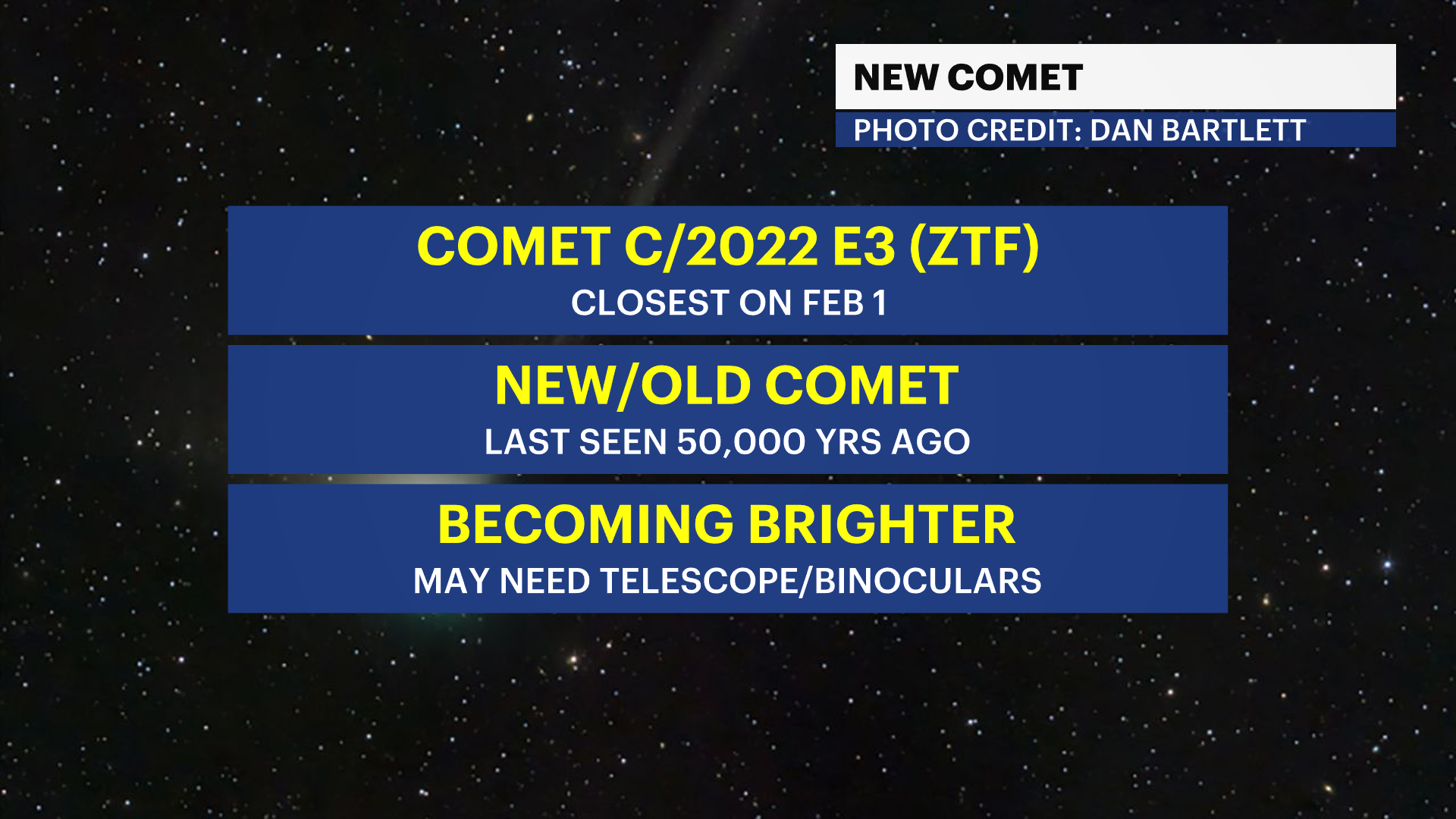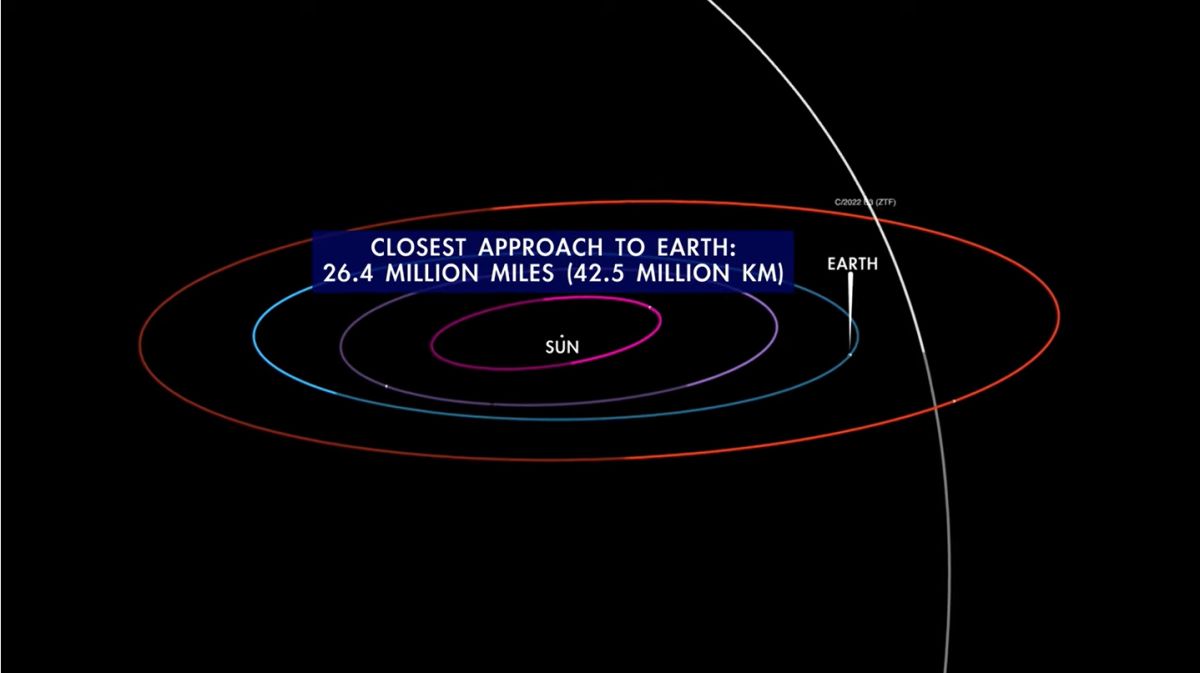More Stories
A newly discovered comet that made its
closest approach to the sun on Wednesday, may have last visited the inner solar
system during the Stone Age!
Early humans and even Neanderthals may
have been the last eyes to gaze on this beauty. This comet is known as Comet
C/2022 E3 (ZTF) – or ZTF E3 for short. It made its way around the sun and is
now heading closer to Earth. From now through February, it will become brighter
and visible in our morning sky.
 Comet C/2022 E3 (ZTF) (Credit: NASA/Dan Bartlett)
Comet C/2022 E3 (ZTF) (Credit: NASA/Dan Bartlett)
The comet is not naked eye yet and requires an aide like a telescope or binoculars. Some hope over the next couple of weeks, it could become even brighter. It will make its closest approach to Earth on Feb. 1, 2023 at just 28 million miles. It is currently seen during the pre-dawn hours, but by February it’s possible it may be seen at night in a really dark moonless sky.
This may just be the brightest comet
of the year. It was discovered in March of 2022 by two astronomers in
Southern California, Frank Masci and Bryce Bolin. At that time, the comet was out near
Jupiter’s orbit but it was extremely dim. It has now made its way around the sun
and eventually it will pass by Earth. The sun’s heat will “melt” the comet
and help it become brighter.
 NASA chart showing the orbital path of Comet C/2022 E3 (ZTF) as it passes Earth. (Credit: NASA/JPL-Caltech)
NASA chart showing the orbital path of Comet C/2022 E3 (ZTF) as it passes Earth. (Credit: NASA/JPL-Caltech)
After plenty of observing and research, the comet’s orbit was
calculated to be roughly 50,000 years. The type of orbit it has may also mean
this could be its last trip through our inner solar system.
Let’s hope for the best
with the weather, always looking for dark clear skies which have been
tough to come by lately.
More from News 12
3:53

Pass the cheese! Charcuterie board hosting tips for the holidays
2:13

Serendipity 3 serves holiday magic and frozen hot chocolate to Times Square
2:20

Expert tips for making the perfect sushi roll
0:26

Turkey and stuffing Oreo? New holiday flavors hit the market.
1:37

Foods that make you glow from inside out!
3:52
